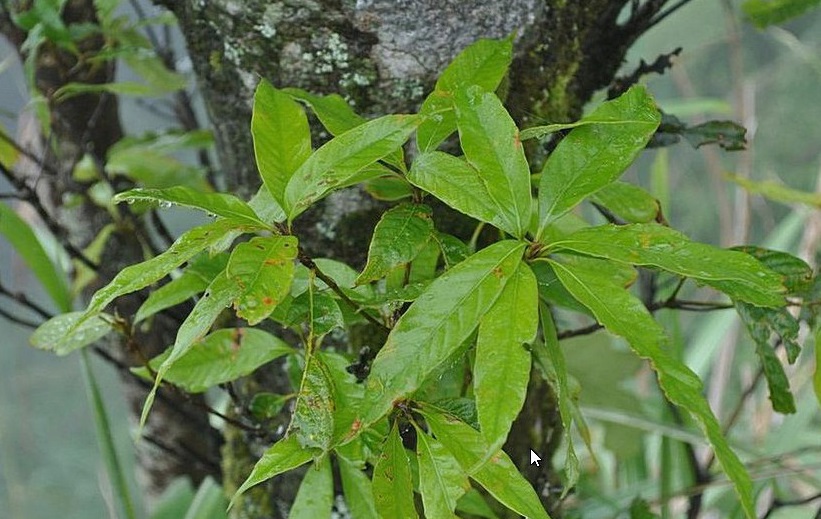Beautiful oak
(Quercus bella)

Description
Quercus bella, also known as the Texan oak or beautiful oak, is a species of deciduous tree that belongs to the Fagaceae family. It is native to North America, specifically in the southern United States. This oak species is characterized by its stunning appearance, with deeply lobed leaves, smooth bark, and a pyramidal shape when young. In this article, we will explore the different aspects of Quercus bella, including its physical description, habitat, cultivation, and uses. Physical Description Quercus bella is a small to medium-sized tree that can grow up to 30 feet tall and 20 feet wide. It has a straight trunk that can reach a diameter of up to 1 foot, and the bark is smooth and grayish-brown. The leaves are deeply lobed and can reach up to 5 inches long and 3 inches wide. They are shiny and green on the upper surface and pale on the lower surface, with a distinctive blue-green hue. The flowers of Quercus bella are small and inconspicuous, and they appear in early spring. The male flowers are borne in drooping catkins, while the female flowers are borne in clusters at the base of new leaves. The fruit is a small, acorn-like nut, with a brown, woody cap that covers the upper part of the nut. Habitat Quercus bella, also known as the Texan oak or beautiful oak, is native to the southern United States. Its natural range includes parts of Texas, Louisiana, Mississippi, and Alabama. Within this range, it can be found growing in a variety of habitats, including forests, woodlands, and savannas. Quercus bella prefers well-drained soils and can tolerate a wide range of soil types, including sandy, loamy, and clay soils. It also thrives in full sun to partial shade and can withstand drought conditions. Cultivation Quercus bella is a relatively easy oak species to cultivate and maintain. Here are some guidelines for its cultivation: Soil: Quercus bella prefers well-drained soils, but can tolerate a wide range of soil types, including sandy, loamy, and clay soils. Sunlight: This oak species thrives in full sun to partial shade. Watering: Water the tree regularly, especially during its first year, to ensure that it establishes a strong root system. After the first year, Quercus bella can tolerate drought conditions. Fertilization: Fertilizer can be applied in early spring to promote growth and development. Pruning: Prune the tree in the winter to remove any dead or diseased branches. Propagation: Quercus bella can be propagated from seeds, cuttings, or grafting. Seeds should be planted in the fall or early spring, while cuttings should be taken in the late summer or early fall. Transplanting: If transplanting a Quercus bella, it is best to do so in the fall when the tree is dormant. Make sure to dig a wide hole and loosen the soil to promote healthy root growth. Overall, Quercus bella is a hardy tree that can adapt to a wide range of growing conditions. With proper care and maintenance, it can make a beautiful addition to any garden or landscape. Uses Quercus bella, also known as the Texan oak or beautiful oak, has several uses, both for humans and wildlife. Here are some of the most common uses: Food source: The acorns produced by Quercus bella are an important food source for many animals, including deer, squirrels, and birds. Wood: The wood of Quercus bella is hard and durable and is often used for furniture, flooring, and cabinetry. Landscaping: Quercus bella is often used for landscaping purposes, as it is a beautiful addition to any garden or park. It can be planted as a specimen tree, in a mixed border, or in a woodland garden. Wildlife habitat: Quercus bella provides habitat for a variety of wildlife species, including birds, insects, and small mammals. Shade: The broad canopy of Quercus bella provides shade and can help reduce energy costs by keeping homes and buildings cooler in the summer. Overall, Quercus bella is a versatile tree that provides numerous benefits to both humans and wildlife. Its acorns are an important food source for animals, its wood is valuable for construction and woodworking, and it makes a beautiful addition to any landscape. Conservation Status The conservation status of Quercus bella, also known as the Texan oak or beautiful oak, is currently classified as "least concern" by the International Union for Conservation of Nature (IUCN). This means that the species is not currently considered to be at significant risk of extinction. However, like many oak species, Quercus bella faces threats from habitat loss, disease, and climate change. The conversion of natural areas to agriculture, urbanization, and other forms of development can reduce the amount of suitable habitat available for Quercus bella and other wildlife species. Diseases such as oak wilt and sudden oak death can also pose a significant threat to the health of Quercus bella populations. In order to conserve Quercus bella and ensure its continued survival, it is important to protect its natural habitat, monitor for disease outbreaks, and promote responsible land use practices. Conservation efforts may also include planting Quercus bella in suitable habitats where it has been lost due to human activities. By taking these steps, we can help ensure that future generations can enjoy the beauty and benefits of this unique oak species. Conclusion Quercus bella is a stunning oak species that is native to the southern United States. It is known for its deep-lobed leaves, smooth bark, and pyramidal shape when young. This oak species is easy to grow and maintain and is resistant to most pests and diseases. It is an excellent choice for gardeners who want to add a touch of beauty to their landscape. Quercus bella also has several uses, both for humans and wildlife, including as a food source and for its durable wood.
Taxonomic tree:







